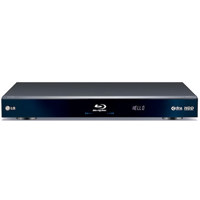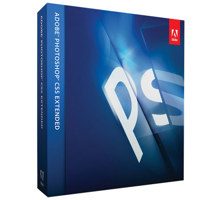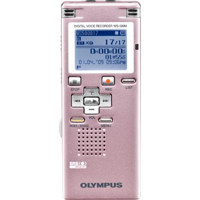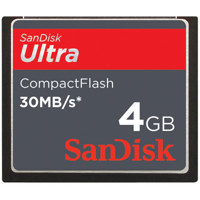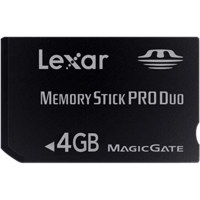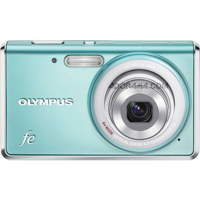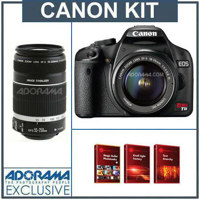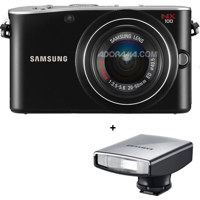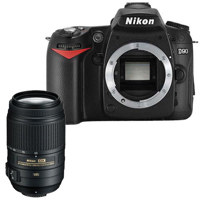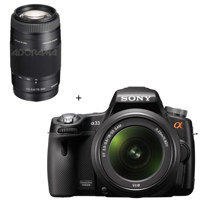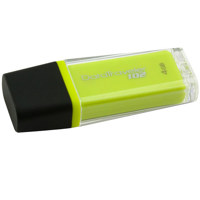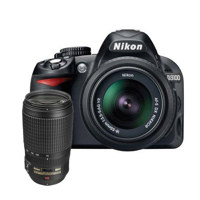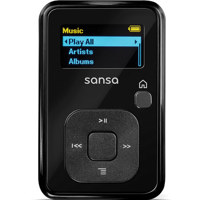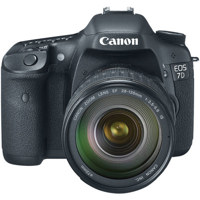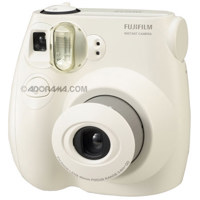UPDATED: THIS ARTICLE HAS MOVED – visit http://www.ronmartblog.com/2012/09/what-camera-should-i-buy-2012-edition.html to see the current version.
This is the old article which is now out of date. Please stop reading now.
- For Part II of this article see DSLR Photography on a Budget
I belong to a huge photography group of over 2300 members worldwide, and hardly a day goes by where someone doesn't say:
I'm currently shooting with a point and shoot and have decided to step up to a DSLR camera. What camera should I buy?
From there someone in the group usually asks what do you plan to do with the camera and what is your budget. The usual answer goes something like this:
I want to spent about $1000 (maybe as much as $2000 if necessary) and I want to do portraits, sports, landscapes, travel, indoor shots and macros.
Now the funny thing about this response is that pretty much encompasses the entire world of digital photography and you aren't going to be able to do all of that for $1000 (or $2000 for that matter). Usually after probing these people you find out that they have (or will soon have) a new baby and they've managed to convince their spouse that they need a DSLR to take good pictures of the baby (good argument - Canon and Nikon make millions thanks to this excuse).
Anyway, the best place to start is to realize that the DSLR world is different from the point and shoot world where one camera does everything and mediocre quality is good enough. Even though you initially will look at any DSLR picture and say OH WOW, THAT'S AWESOME. it won't take long after you get your camera before you understand the difference between a good quality photography and a poor one -- and that doesn't even account for what you think of the creativity of the shot.
You will quickly start looking at things like picture sharpness, the bokeh (the blur behind an image), chromatic aberration and the edges of an image for perspective distortion and vignetting. You don't think that now, but after you lay down for your hard earned cash for your first $1000 plus lens (and trust me my friend, you will eventually if you stay in the DSLR world), all of these things will mater to you very much. Why? -- because you'll need a reason to justify to yourself and to your significant other why you spent $3000 on the credit card to B&H last month!
Now I'll deviate from my typical response I give to photography newcomers and tell you right now that if you are going to take up DSLR photography for a living you better be prepared to spend a lot of money.
While it is true that if you are a person of infinite willpower and you isolate yourself from other photographers and the Internet that you might be happy with your original purchase, the reality is that most people find themselves spending thousands on additional gear as they get bitten by the photography bug.
If you really and truly only have $1000 to spend then now would be a wise time to reconsider your decision while your credit cards are still being paid on time and your loved ones still know what your face looks like without a camera in front of it. If this is you, then consider an outstanding point and shoot like the Canon G12 or s95, which will give you near DSLR quality without the temptation to spend thousands. For the rest of you gear heads, read on and enjoy…
Yeah, yeah, yeah - So which is it, Nikon or Canon?
As of this writing, I’m declaring Canon back in the game and no longer recommending Nikon exclusively. In my opinion, Nikon and Canon are now even with Canon at the lead at the low end. The high ISO performance war has been good as it has forced Canon to improve, but Nikon still has a slight edge. Its highest end camera, the D3s (which sells for $5200 at the time of this writing). This means if you want to take a picture without a flash when there is very little ambient light (i.e., indoors), you'll find that the pictures taken from either body won’t be as noisy those from cameras in the past from ISO 800 to 6400. For the high ISO noise war, I am ranking the major winners right now as follows: (these are not my only recommendations)
- Nikon D3s (B&H)
- Canon 1D Mark IV (B&H) – 1D Mark IV Shoppers Guide
- Canon 5D Mark II (B&H) – 5D Mark II Review
- Nikon D700 (B&H)
- Nikon D7000 (B&H) – See my hands on review
If you don't currently have any investment in lenses (or a good friend or family member who will let you borrow their lenses), then you should consider the body that suits both your needs and budget as your first DSLR camera. Nikon is a more expensive platform, but expensive doesn’t mean better – it just means they feel the market can handle a price increase at this time (and sadly Canon is following them).
Naturally, any good buyer should do their own research and try each product for themselves, but beware that the opinions of Nikon versus Canon are stronger than peoples views on abortion, politics, and religion. The fact that I use Canon gear yet I still put Nikon at the top should give you an idea that I am trying to be unbiased here, but my fellow Canon brethren may have me burned at the stake for uttering such blasphemy.
The reality is that both Canon and Nikon are VERY good and you'll be happy with either platform, but I'm going to make a statement that will inflame the rest of the photography world when I say that I strongly you recommend you choose Nikon or Canon over other brands like Olympus, Sony, Pentax, etc... I say this because you'll find most of the photography books, products, etc... revolve around these two brands, so your buyers remorse is sure to be strong.
What about Micro Four-Thirds Cameras?
Camera’s like the Panasonic Lumix DMC-GF1 and other Mirrorless System Cameras have become the rage lately for their compact size and image quality that is far superior to a Point & Shoot camera, but personally I’m not interested in this platform.
It’s a great technology, but I don’t see the value in paying about the same price as you would pay for a fantastic camera like the Canon Rebel T2i yet be limited in your lens and external flash choices. I think this platform has great potential, but at this point I think it is a niche market designed for those who already have a DSLR and who are wanting a smaller trendy product.
I think my opinion of this technology will likely change as Canon and Nikon get on board so that their wide array of supporting products can be used with these technological wonders.
Okay, okay, so what camera should I get?
I’ve decided that since you need to focus on what platform you want to invest in, then from there you will likely want some guidance on the right gear for that platform. As a result I’ve included both Nikon and Canon sections and leave it up to the user as to which platform they wish to invest in.
Nikon
If you chose to go with Nikon I recommend that you consider the D7000 (see my hands on review) depending on your budget (and if you have a big budget then get the D3s or D3/D700). If that is still too much to spend then as a last resort then consider the D90.
I am no longer recommending the D5000 or D3100 because they only have Auto Focus when paired with AF-S or AF-I lenses due to its lack of a built-in focus drive motor. I think it is stupid for Nikon to be doing this at this point, especially with a cameras like the D3100 and D5000 which have so much promise. I know that to some extent that this isn’t a show stopper for some, but with all of the great cameras in Nikon’s lineup I just don’t see the point in investing in these.
I should also add that I DO NOT recommend previous generation Nikons (including the D40) as all newer bodies offer an advantage in high ISO noise reduction and image quality. If you want a good deal used, consider the D300 as it has the an outstanding performance to value ratio. If your wallet has a little extra jingling in it, then go for the D700 as it is as powerful as the mighty D3 at a much reduced price.
If I were buying a new body today from scratch, I'd probably choose the D700 as my first choice. If I had some extra change I'd do the D3s, but if things were tight I'd go with the D7000 (B&H). Nikon is doing everything right now, and has set the bar for the ISO performance war, so I expect good things out of them moving forward.
For more info visit DPReview.com and look for the “In-depth review” links (currently in green)
Canon
If you chose to go with Canon, then I'd consider going with the excellent Rebel T2i for the entry level. It’s a really nice little camera that is fun to use, and better than the Nikon D90 by quite a bit in my opinion. The next notch up from that is the 60D which I’m sad to say has taken a dip in quality from previous xxD series making it little more than a T2i with more features. Personally, I recommend that you consider the T2i or if you need more features then jump up to the most fun to use DSLR on the market today, the Canon 7D. If you want outstanding image quality and a full frame body at the expense of an outdated auto focus system (where the 7D rules), the Canon 5D Mark II is an outstanding choice. I recommend the 5D Mark II over the 1Ds Mark III unless you need the weatherproofing features it offers. If you have deep pockets, or a sports shooter (and babies count as sports) then the expensive, but fantastic 1D Mark IV is an easy choice. I own the 1D Mark IV and LOVE IT!
I do not recommend you consider older bodies unless you are on a super tight budget, in which case I recommend the 40D over the 50D. I do not advise any that you purchase any Rebel bodies below the current T1i at this point.
For more info visit DPReview.com and look for the “In-depth review” links (currently in green). I also have the following reviews:
What lens should I get? (Updated)
Since I first wrote this article I've introduced a more detailed article at http://ronmart.blogspot.com/2008/03/which-lens-should-i-buy.html to discuss the complex task of choosing the right lens. The important thing here is to buy the best lens you can afford, even if it means you have to sacrifice the quality of the body you purchase. A body is only as good as the lens it is attached to (just like the speakers on a stereo), so a $2000 camera paired with a $200 lens makes zero sense. You are also in much better shape with one great lens like 50mm than you are with some one-size fits all lens that tries to do 28mm-300mm as the later lenses are trying to defy the laws of physics and will force to live at higher ISO’s most of the time which will result in a very unsatisfying experience!
If you need more info about lens or camera basics then try reading this article http://photonotes.org/articles/beginner-faq/ (even if you are aren't a Canon photographer, most concepts are true of all camera makes).
But wait Ron, that lens is costing me my whole budget!
EXACTLY! Welcome to photography, and this is why you shouldn't even be thinking about portrait, macro photography, sports zoom, wide landscape lenses, and such right now. I said this hobby was expensive, and I really wasn't kidding! My budget when I started in Digital SLR Photography in March of 2007 was $2000 like everybody else, and here years later I've purchased enough gear to buy small car and I still haven't got everything that I wanted. This hobby is an impulse buyer's nightmare, so stay away if you don't have major self control!
So now that you know what a good lens cost, you should re-evaluate your camera body and just choose the an inexpensive new generation body (i.e., Nikon D90 or Canon T2i). If you must, consider a previous generation body while you can still get them new and on-sale or even a slightly used body (there are plenty of those from people who either realize photography is too expensive and sell their gear or who decide to upgrade their body once they've got their first $5000 in lenses).
Won't an entry level DSLR give me crappy pictures?
For most of 2007 I shot with a Canon Rebel XTi and I got great shots like this and was published in magazines. The reason why is because I was using a really good pro sports zoom lens (which has now been replaced by this). In fact, most of my shots on my personal website before 2008 were taken with my XTi and really good lenses. As I mentioned earlier, it isn't about the body - it is the lens that will determine the quality of your shots more than anything else.
If it's all about the lens why should I consider the newer camera bodies?
The answer is simple - the newer bodies do everything the older bodies do, but much better. This is especially true when using ISO 800 or greater (in fact, new bodies can usually do up to ISO 6400 very well and some are even usable at 12,800). In addition, today's DSLR's are little computers, so the performance of the newer cameras will result in more successful photo shoots thanks to improvements in auto focus, noise reduction and more.
But my friend says I should get X, Y & Z
Just like with computers, in the photography world nearly everybody (myself included) thinks they are experts when 99% of them really don't know jack. Be an intelligent shopper and use this article as a starting point, but don't take my word for it. Go to a local camera shop and play with the gear (BUT DON'T BUY), and do a lot of research on the web before you decide on what to get.
You'll find the following sites helpful in your quest to determine what you should get:
- Links to reviews of Canon lenses and cameras - http://www.canon-reviews.com/ (START HERE for Canon)
- Nikon User Community -http://www.nikonians.org/
- THE BEST camera reviews - http://www.dpreview.com/
- Real photographs by real people using each cameras your researching - http://www.flickr.com/cameras/ and http://www.pixel-peeper.com/
- Real user reviews for each product at B&H
- A Nikon know-it-all who also owns some Canon gear - Ken Rockwell
- Real user reviews for each product at B&H (take with a grain of salt as there’s sometimes bogus info by those with an axe to grind)
Where do I buy?
I recommend buying online over shopping local. You save taxes, have a better return policy (no restocking fees) and in some cases you’ll save taxes. If you want to save money, and get your gear from the most respected name in photography in the United States, then I HIGHLY recommend B&H (article about B&H). I also love Amazon.comand Adorama. I've bought 95% of my gear from B&H haven't had any major problems. If you need to return something it is best to get an RMA within 14 days and the packaging must be in resalable shape, but other than that they usually get things right. Remember this when opening your packages and do like I do – take photos as you open it so you can put it back if you want to return it!
Feel free to contact me if you are struggling on the final details of your purchase, but if you do I ask that you use a link on my blog when purchasing. I earn a commission when you use my links and that is what funds this blog so that I can bring you all the great articles it provides. Sadly many people over the last year have chosen to use my information and then buy elsewhere, and that is putting the future of this blog at risk. If you can’t (for geographic reasons) or don’t want to use my links, I ask you to use the donate link (no signup required) and contribute an amount that you think is fair (commissions are generally 3% of the purchase price). Using my links are the best way though because your price is the same, and I get the commission so we both win!
Thanks for your support!
What book should I get?
I've written a very popular blog article to cover the important subject about which books to read so you can make the most of your DSLR experience.
Does this mean I don't need to read my camera manual?
NO!!!! Your camera manual, no matter how poorly written, is an excellent resource that should be read from cover to cover about once a month for the first few months you own your camera until you know your cameras main features by heart. In fact, I highly recommend starters view this tutorial. It’s old, and it is for the Canon Rebel XT, BUT it is applies to both Canon and Nikon cameras (cameras change, but these core concepts still apply). In fact, I like this tutorial so much I use it for my classes! The creator of this tutorial also has a great iPhone/iPad app.
But what about flashes, tripods, camera bags, etc...
I have a digital workflow software article which I need to update badly as it is way out of date, but at a high level it is still worth reading. I also am a huge fan of Think Tank Photo camera bags, and don’t recommend any others – here’s why. For flashes, On-Camera Flash Techniques is a THE book to start with (Canon and Nikon). Right now I only recommend the Nikon SB-900 and Canon 580EX II. Sure there are cheaper options, but these flashes produce outstanding results and work well both controlling other off-camera flashes as well as being fired off-camera through light modifiers (i.e., umbrellas). If you buy the cheaper flashes, you’ll regret it at some point (again, unless you are the type to buy and never read about Photography on the Internet again).
What’s in your bag?
While the contents of my gear collection is always changing, I try to keep things up to date in my What’s in my bag article.
Do you get paid to recommend things?
No, I make my recommendations with no influence from any third party. They are my independent opinion based on my own research. However, if you buy something using a link on this site then I may get a commission. I'd appreciate if you supported this blog by using my links, but honestly I do this because I enjoy helping people. Here’s my full disclosure document if you are concerned I’m hiding something about how this “for profit” blog works.
Where to go from here?
For more information, part II of this topic can be found at DSLR Photography on a Budget and my Best of RonMart.Blogspot.com article. You can save big bucks here too.
If you are interested in printing your own photos, then my printing series is a huge hit with a ton of information including interviews and tips from the best master printers in the country!















